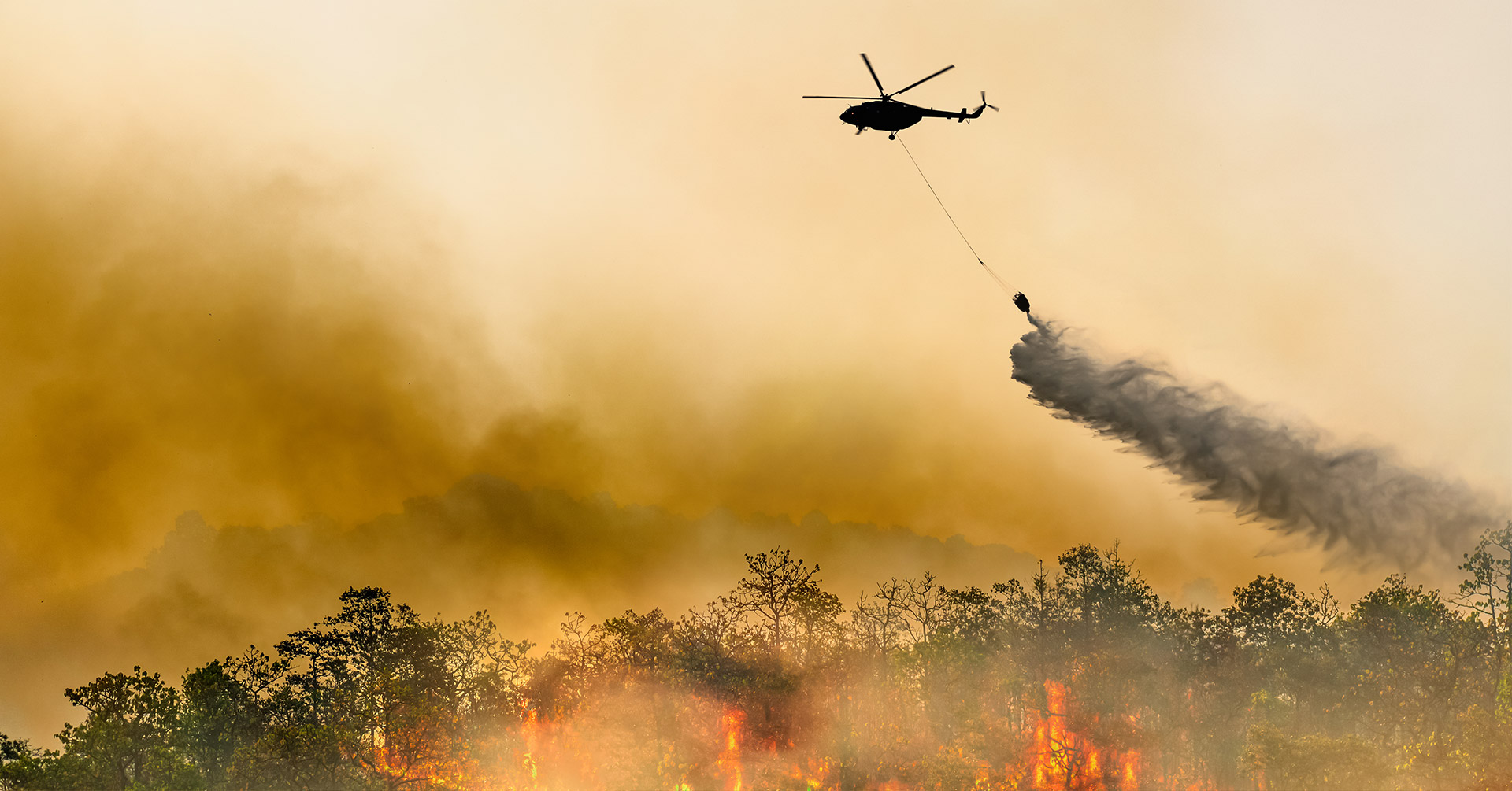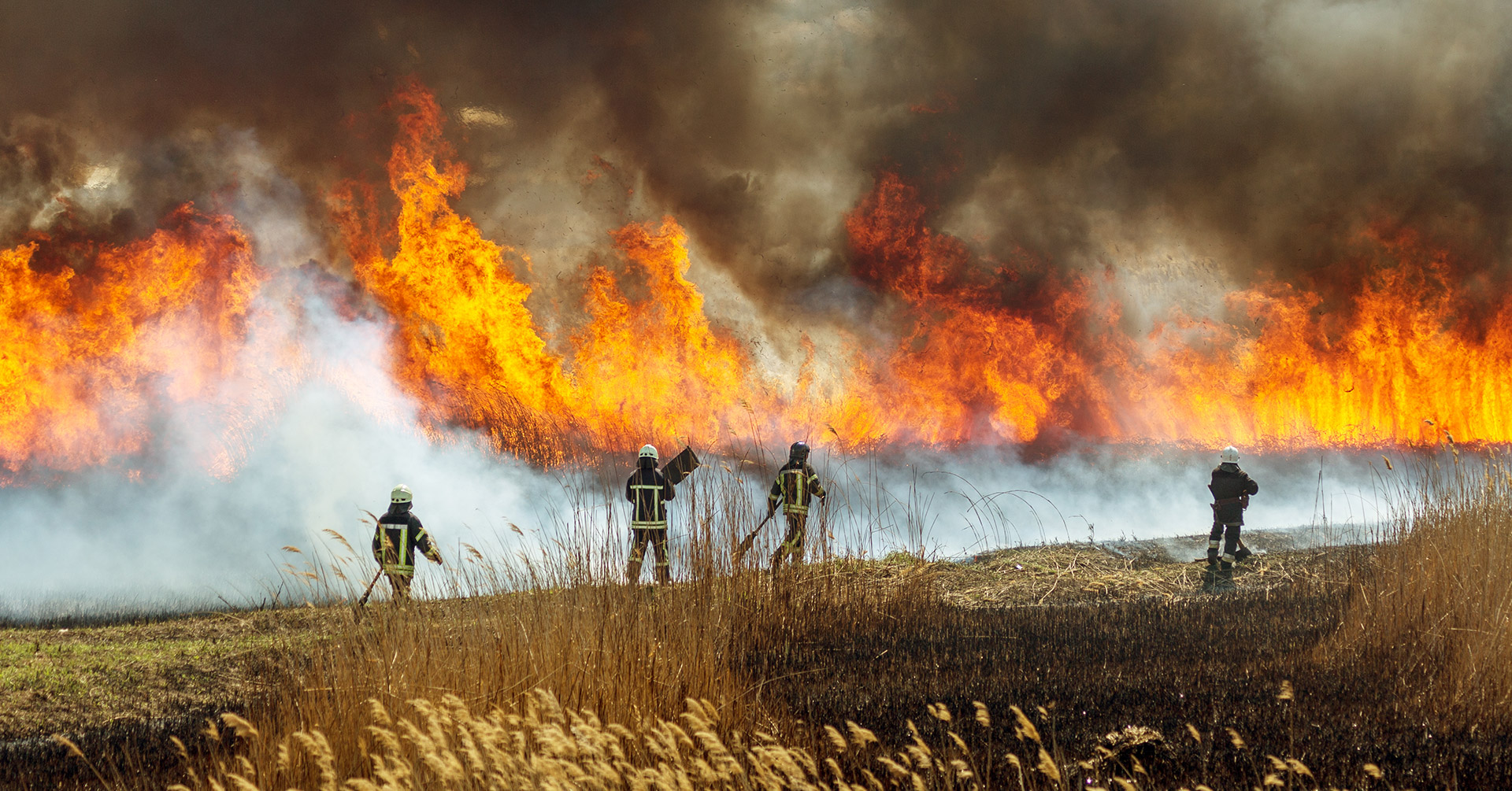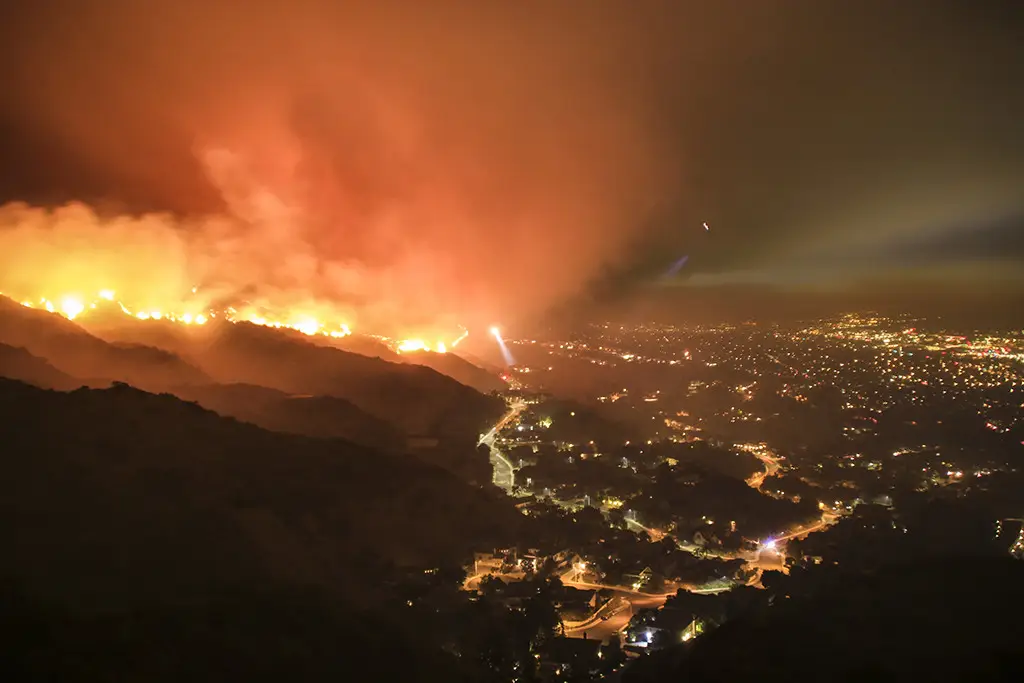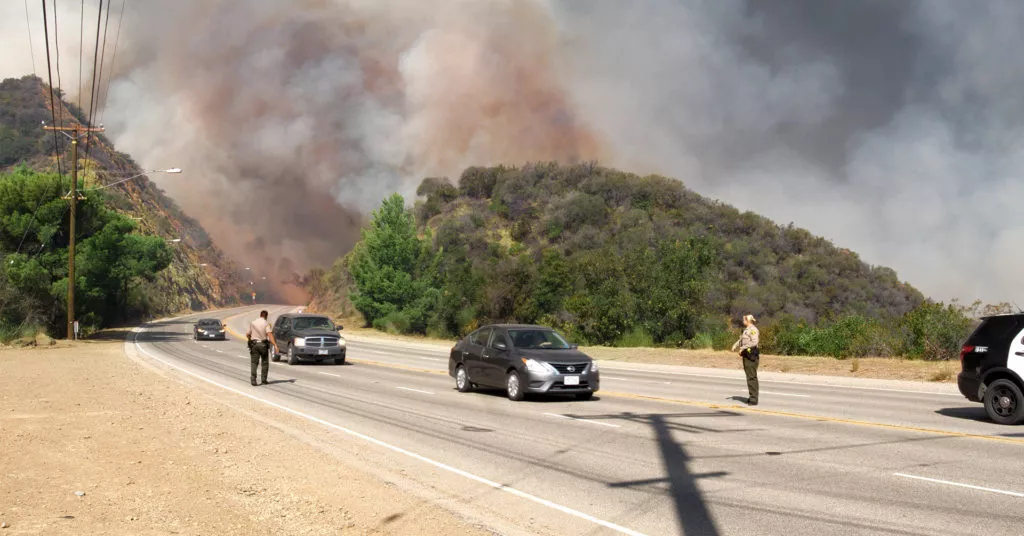
Create a Wildfire Emergency Response Plan for Your Business
When you get the alert for a wildfire evacuation, you don’t want to waste time worrying and wondering. Use these best practices to plan ahead so you will feel prepared when it’s time to get out.
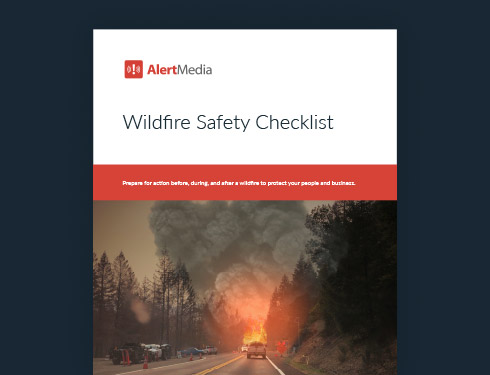
In the last several years, the threat of wildfires has grown in severity and rate—and they’ve spread outside the traditional “season” when they can be expected. Wildfire season is lengthening, fueled by climate change, higher temperatures, extreme droughts that create combustible materials, and climate change. The wildland-urban interface—a transitional zone between wild and developed land—is also contributing to more frequent wildfires and more frequent impact to human settlements.
We spoke with U.S. Fire Administrator, Dr. Lori Moore-Merrell. The problem, she explains, is that homes and communities are expanding into areas that are historically prone to fire. “There are certain trees that depend on fire. We’ve had our tribal communities who have used fire effectively in their culture for hundreds and hundreds of years,” she told us on The Employee Safety Podcast. “And so just because we cleared the trees and put homes there does not mean that geography is not still fire prone.”
Business owners, particularly those located within these affected areas with high wildfire risk, need to be prepared for fire protection and fire safety. In some cases, that means changing your landscaping to limit flammable materials and create more defensible space. Sometimes it means contacting your insurance agent to get more information if you were to need to file a claim. It also means training evacuation procedures and creating a comprehensive preparedness plan.
The best way to keep everyone safe and protect your business is to practice good natural disaster preparedness. In this article, we’ll cover how to make an effective wildfire emergency response plan, including where to find relevant wildfire resources, tips for evacuation planning, and best practices for how to best prepare your people for a wildfire evacuation while maintaining business continuity.
Where to Start With Your Wildfire Emergency Response Plan
The first step in preparing for a potential wildfire—before your business has received an evacuation order—is to perform a threat assessment to understand the different wildfire threat levels, get comfortable with the terminology used by experts, and begin formulating your emergency plan for receiving an evacuation order.
Understanding wildfire evacuation order stages
The most-used framework for wildfire evacuations is the “Ready, Set, Go!” framework. It has three stages that help you prioritize elements of your response and fire emergency action plan as the threat of a wildfire grows. Here are the three stages:
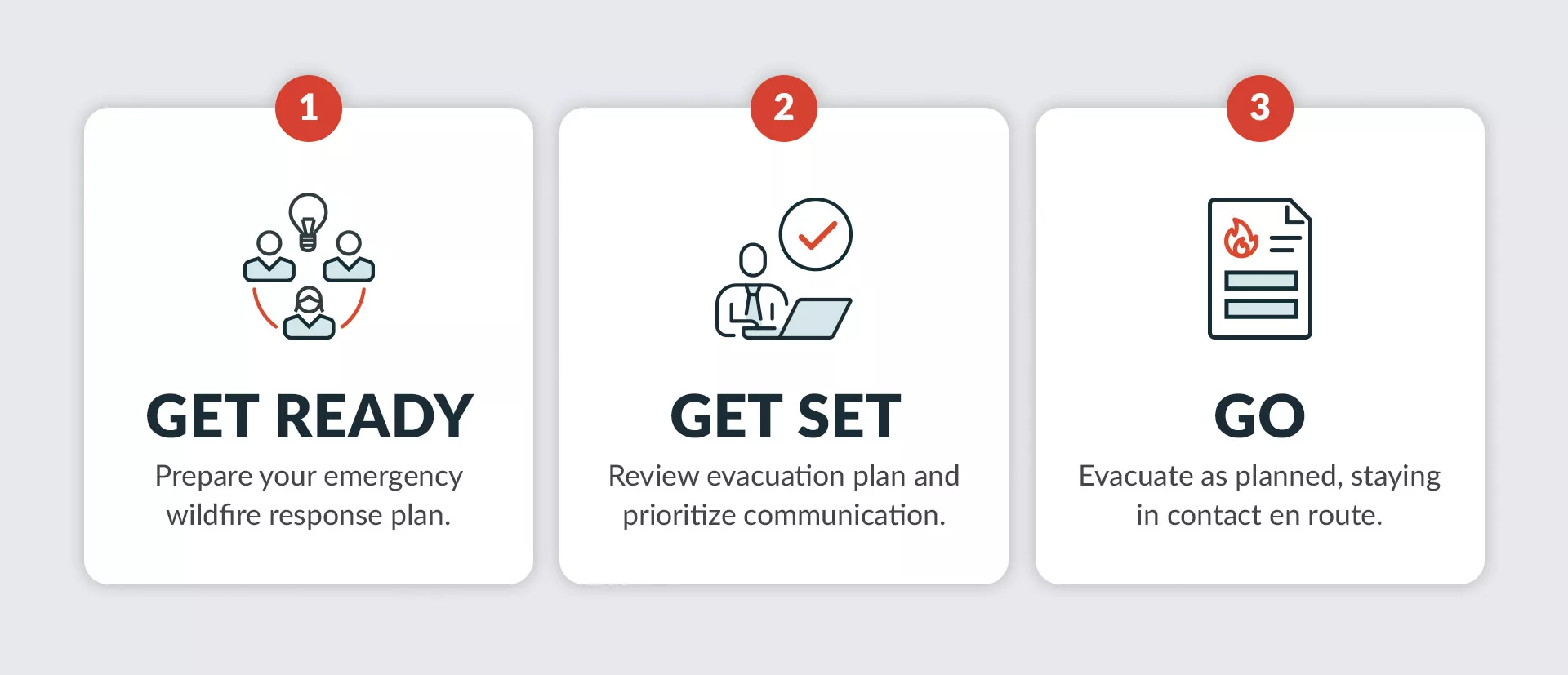
At this stage, there is a wildfire that is in your area, and you or your business face a possible threat of evacuation. This is a good time to pack and make sure you are ready for an evacuation. You can also take steps towards the mitigation of fire damage. Be sure to keep a close eye on your local media and emergency alerts so that you know when your threat level increases.
At this stage, you or your business are under a severe threat and face an imminent evacuation. You should be completely packed, aware of available escape routes to depart the area, and ready to leave at a moment’s notice.
At this stage, you must evacuate yourself, any employees, and animals (if applicable) to a safe location. This is your final notice, and it is incredibly important to leave immediately—there is no time to pack or gather belongings.
Identify wildfire information sources
There are several ways to find out whether you are facing a wildfire evacuation. It’s important to do research on the threats your location commonly faces. If you are in an area where wildfires are likely to occur, here are some of the best resources to follow for wildfire information:
- Federal alert systems like the Emergency Alert System or ready.gov
- Local or state wildfire websites such as Cal Fire
- A threat intelligence system, such as AlertMedia, that will proactively alert you of any threats that may impact your area
- Official wildfire maps
Your best chance of emergency preparedness is to sign up for local and federal alerts—you can find more information about federal emergency alert systems on the FEMA website. For local fire alerts, check your fire department, city, or state website. Many states—especially those prone to wildfires—have region-specific websites where you can find in-depth information about wildfire incidents, emergency contact information, and other helpful resources.
If you want additional notice of any local wildfire threats or information tailored to your business locations (and employees’ locations), consider a threat intelligence system that will proactively alert you of any threats that may be affecting your area. These sophisticated services draw on thousands of reliable sources to identify events such as wildfires that threaten your people or your business operations. Some even allow you to communicate directly with trained intelligence analysts who can highlight approaching threats to help you focus on what is most pressing.
But being aware and having access to the proper emergency notifications are just the first step. In order to ensure safety during a wildfire evacuation, you need to prepare beforehand. We’ve broken that preparation down into several steps.
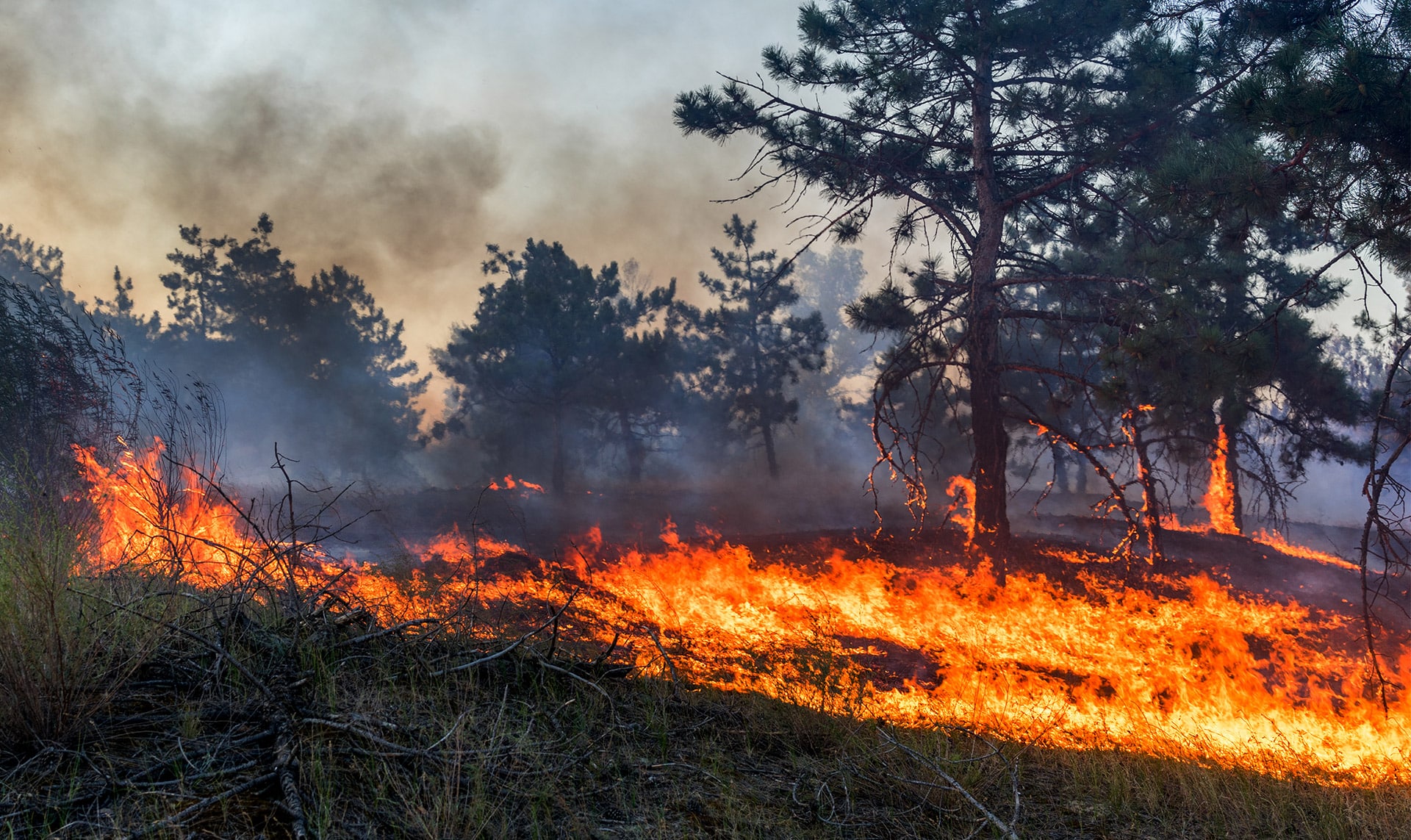
Preparing Your Business for a Wildfire Evacuation
There’s a lot that goes into evacuating your business, and the best time to prepare is long before you hear orders from your local emergency personnel. Here are the basic things that you should have together well in advance of a wildfire.
1. Review your wildfire safety checklist
An easy way to stay organized as you prepare for a wildfire evacuation is to complete a checklist, like AlertMedia’s. This wildfire safety checklist includes all the necessary actions for you and your employees.
Items on your checklist include steps to complete before, during, and after a wildfire, such as:
- Creating fire evacuation routes
- Deploying fire extinguishers
- Creating a “defensible space”
- Making your workspace fire-resistant
- Evacuation best practices
- Communicating with your employees
- Recovering after the wildfire has passed
Once you’ve completed your checklist, place a copy in several different locations, and let your employees know where it is. You should be able to access this checklist quickly and easily. Remember, during an emergency, you and your team members will likely be in a stressed or panicked state, so set yourself up for success before you need to evacuate.
Items on your checklist may include (but should not be limited to):
- Making sure your cell phone and laptop are charged
- Packing up important documents (e.g., insurance policies, contracts, etc.) or supplies
- Notifying employees about precautionary measures they can take to protect themselves, family members, and personal property (see homeowners list below)
- Communicating anticipated disruptions and relevant fire information with customers or business partners
- Distributing contact information for the local fire department, vendors, landlords, and key personnel
- Preparing/protecting your building by creating defensible space
- Preparing a redundant worksite, backup computers, and critical software
Once you’ve created your checklist, place a copy in several different locations, and let your employees know where it is. You should be able to access this checklist quickly and easily. Remember, during an emergency, you will likely be in a stressed or panicked state, so set yourself up for success before you need to evacuate.
“TIP: Your business is likely constantly evolving and growing, so make sure you are auditing your packing list regularly. An all-hazards preparedness approach can also ensure your plans remain current and personnel are up to date on procedures.”
2. Plan your evacuation routes
When it comes to wildfire evacuations, knowing where to go is critical amidst stressful, dangerous conditions. The best way to make sure you and your employees make it out okay is to plan ahead. Have your evacuation routes mapped out ahead of time—and make sure all on-site personnel are familiar with these plans.
Here are a few best practices for planning your wildfire evacuation route:
- Have multiple evacuation routes going in different directions so that you are ready for a wildfire coming from anywhere
- Keep an updated record of nearby public shelters
- Have physical maps of your routes in case cell phone service is down
- Have a plan in case you and other evacuees become separated
Be sure to keep your evacuation routes with your checklist and packing list, and distribute it to your employees.
3. Create a packing list ahead of a potential business evacuation
Gathering gear and supplies proactively can make a huge difference if and when a wildfire sparks in your area. Much like with a home evacuation, you want to know exactly what to pack and where you will find it. Remember that you will be leaving in a rush and will be able to carry or transport only so much, so include only what is critical to the function of your business.
Priority items include things like:
- Masks to filter heavy smoke
- Non-perishable food and water
- First aid kit
- Map of evacuation routes
- Flashlight
- Portable radio
- Valuable equipment (that you can easily transport)
- Hard drives with computer backups and/or important files
Remember that in the case of an evacuation, you may need to operate your business from a different location for an extended period and/or endure prolonged power outages. List out everything you would need to function as close to normal as possible.
Once you have your packing list, collect all those important items in one place so they’ll be easier to grab in an emergency. You can also mark their location with signs or labels and note those details on your packing list.
Just like with the checklist, make sure your evacuation packing list is easily accessible in multiple locations throughout the building.
“TIP: Include important documents like your evacuation routes in your messaging templates.”
4. Establish and test your communication plan
When preparing for a wildfire evacuation, it’s also critical to know how and what you are going to communicate with your employees if this kind of emergency strikes.
Having a communication plan ahead of time will ensure the most important messages reach those at risk, and you can better avoid the challenges that come with wildfire communications. Above anything else, making sure that your employees know when a wildfire evacuation is happening will save lives. As important as your paperwork, building, and equipment are, none are more important than the safety of your employees.
Set your communication plan long before you need it by updating employee records, integrating any mass notification systems, and setting guidelines for how you will be reaching out to anyone at risk.
If you are using a mass notification system (or even if you are not), it is critical to test your systems ahead of time with a fire drill or evacuation drill. This will help you identify and fill any gaps in your system before an emergency strikes.
You can also make communicating during a wildfire evacuation much easier by creating or setting up wildfire communication templates for your most likely and most timely messages. That way you will only need to press a few buttons instead of spending precious time writing out your messages when you should be packing or evacuating.
Additionally, it’s important to plan for how you will hear back from your employees on whether they are safe or not. A two-way messaging system gives you visibility into the status of people who might be in harm’s way.
With your communication plan set in advance, you can focus on keeping everyone safe when an emergency strikes.
“TIP: Threat intelligence solutions—like those we offer at AlertMedia—can notify you of emergencies like wildfires in your area long before you receive an evacuation notice, giving you much more time to prepare.”
5. Create a business continuity plan
Create a business continuity plan for your organization. This will help improve the resiliency of your operations once the wildfire is over and minimize the damage to your business. Anticipate which of your business functions will be impacted by the fire and in what ways. Then develop a plan for getting back on track once it is safe to do so. In some severe cases, you might even have to plan for a loss of your HQ or other critical infrastructure, so be sure to consider all the eventualities.
Wildfire Evacuation Best Practices
When a wildfire does occur in your area, keep track of updates through your emergency alert systems and local news reports. Ideally, you won’t need to evacuate. But if you do get that alert saying that you’ve entered an evacuation level 3, it’s time to go! If you’ve taken the time to set yourself up with wildfire evacuation plans, you will be ready when that difficult time comes.
To know what to expect and what you should do in a wildfire evacuation, here are some best practices to keep in mind.
- Always listen to the emergency personnel and law enforcement
- Don’t wait! Leave early to avoid crowded roads and delays
- Take your emergency supply kit, phone, batteries, and any essentials like paperwork and medications
- Make sure you have adequate fuel, and carpool if you can
- Stay inside of a vehicle or building if you can—travel on foot only as a last resort
- Keep in contact with your employees and any external connections throughout the emergency
While nobody wants to have to evacuate, being prepared and planning ahead can make such a huge difference when you have to get out safely. You’ll have more peace of mind that you have everything you need, and you’ll be able to make sure that everyone at risk is safe. So if you do get those evacuation orders, your response will be more effective thanks to your emergency management planning.

